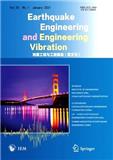| 投稿方式:官网投稿 |
- 栏目频次
- 单位占比
-
热词

低频栏目
-
更多
期刊简介
- 《地震工程与工程振动(英文版)》(EarthquakeEngineeringandEngineeringVibration)(季刊),创刊于2002年,由中国地震局工程力学研究所主办。本刊主要刊登以下内容的综合评述、专题研究论文和科研简报:结构和工程体系震害评定,强震观测与分析,土木基础设施的地震危害性与危险性分析,场地对结构的影响和岩土工程,建筑物与生命线系统的抗震性能和设计原理,结构控制,现有基础设施系统的修复策略,结构动力学以及和地震工程相关的阻尼理论的进展,应急传感与监测系统和高性能材料在地震工程中的应用,以及风、波良和其它动荷载下土木工程结构振动问题。主要栏目:强震观测与分析、结构和工程体系震害评定、土木基础设施的地震危害性和危险性分析、场地效应和岩土地震工程。
-
基本信息
- 期刊名称:地震工程与工程振动(英文版)(Earthquake Engineering and Engineering Vibration)
- 主管单位:中国地震局
- 主办单位:中国地震局工程力学研究所
- 国内刊号:CN 23-1496/P
- 国际刊号:ISSN 1671-3664;EISSN1993-503X
-
- 出刊日期:
- 期刊定价:
-
- 邮发代码:
-
- 所在省区:黑龙江
- 邮政编码:
- 联系地址:
-
投稿信息
-
- 学科分类:天文地球科学
- 版面费用:待核实
-
- 字数要求:16000-46000
- 查重要求:-
-
- 复合因子:0.851
- 综合因子:0.619
-
- 审 稿 费:待核实
- 稿费:待核实
- 本刊可发:
- 特殊属性:第一批认定学术期刊
-
联系方式
- 投稿网址:http://mc03.manuscriptcentral.com/eeev
- 官网网址:http://www.springer.com/11803
- 电话传真:0451-86652649(编辑部)(202303期)
- 电子邮箱:eeev@iem.cn(202303期)(主编邮箱见投稿指南处)
- 微信公众号:

